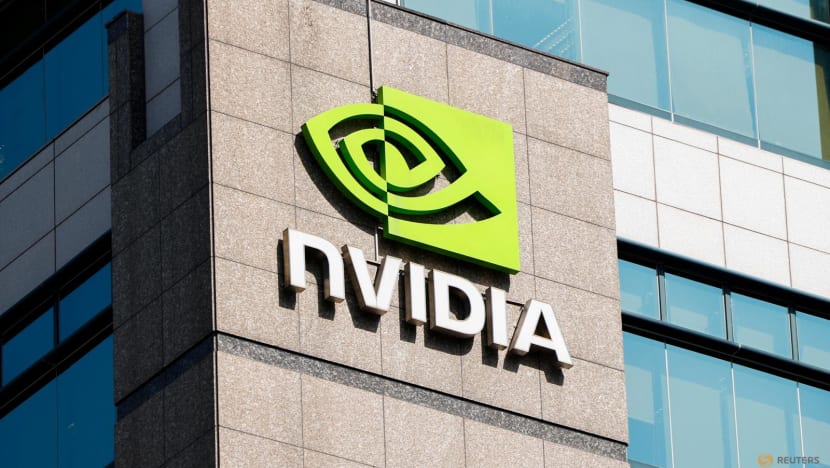China’s latest move in green fertilizer chemistry hasn’t made headlines, but it represents a quietly significant development. A new facility in Xinjiang will soon be producing half a million tonnes of oxamide fertilizer per year—using captured CO2, green hydrogen, and green ammonia. That sentence alone folds in three separate decarbonization strategies: carbon utilization, electrolysis-based hydrogen, and low-emissions ammonia, at least one of which I tend to be skeptical of.
At first glance, this appears to be an all-in-one play for reducing the environmental footprint of agriculture’s most critical input. But as always, the story becomes more complex when the molecular math is unpacked. Oxamide serves multiple industrial purposes, with its primary applications in fertilizers, flame retardants, pharmaceuticals, and plastics.

The global oxamide market was valued at approximately USD$1.2 billion in 2023 and is projected to reach USD$2.1 billion by 2032.
The agriculture sector already uses oxamide as a slow-release nitrogen fertilizer and represents a significant portion of this demand. Additionally, the chemical and pharmaceutical industries contribute substantially, employing oxamide in various chemical syntheses and drug formulations. The plastics industry also plays a notable role, using oxamide in polymer production processes.
The global ammonia market is significantly larger than the oxamide market, particularly in the fertilizer sector. In 2023, the ammonia market was valued at approximately USD$79.1 billion.
Fertilizer production is the dominant application, accounting for around 48% of ammonia’s global market revenue in 2023. Oxamide would have a lot of growing to do to displace ammonia as the primary provider of nitrogen to the plants we eat and feed to livestock. Its value propositions are well understood, but its price point—much higher per ton of nitrogen delivered—has inhibited its use.
Oxamide is a crystalline organic compound, C2H4N2O2. It’s the diamide of oxalic acid, with two nitrogen atoms bound to a carbon-carbon backbone. As a fertilizer, it behaves very differently from urea or ammonium nitrate.
Where those deliver a burst of nitrogen upon application—immediate, soluble, and volatile—oxamide is sparingly soluble and microbially degraded, offering a slow and steady release of nitrogen to plant roots. That leads to dramatically reduced nitrate leaching, significantly lower ammonia volatilization, and, importantly, a substantial reduction in nitrous oxide emissions, one of the most potent greenhouse gases in agriculture. It’s chemically stable in the soil and not prone to being washed away after rainfall.
On the environmental metrics that matter most, oxamide clearly outperforms legacy nitrogen fertilizers. One thought I had was that oxamide might also represent a meaningful reduction in the demand for hydrogen. I’m projecting lowered ammonia fertilizer demand due to a combination of multiple factors.
The first is more expensive fertilizer as green ammonia will always be more expensive than gray and black ammonia, so alternatives and efficiencies will be strongly incented. The second is agrigenetics with plays like Pivot Bio’s, where they have turned off the nitrogen sensors in existing soil microbes that fix nitrogen at the roots of plants, eating sugars the plants exude for the symbiotic effect. Pivot Bio already had a million acres of corn under treatment with their product, which can be brewed like yeast in equipment similar to beer making vats, and was seeing 25% reductions in fertilizer requirements when I spoke to the CEO and co-founder a couple of years ago.
The next lever I was counting on was precision agriculture, where sensors and intelligence platforms figured out exactly how much product was required in what parts of fields and only applied that. That was combined with drone seeding and spraying platforms that avoids soil compression, with its 30% to 55% impacts on field productivity according to reports. Finally, low-tillage agriculture was going to be an assist in this as well.
I was wondering whether oxamide would be another lever. Ammonia production for fertilizer uses roughly 25% of all hydrogen globally, and decarbonizing that sector requires replacing all of that with green hydrogen—an expensive and energy-intensive task. My logic was straightforward: since each molecule of oxamide contains two nitrogen atoms and only four hydrogen atoms, the H:N ratio is 2:1, versus 3:1 in ammonia.
That suggested a lower hydrogen burden per unit of nitrogen delivered. However, when the chemistry and process flows are examined carefully, the apparent efficiency advantage disappears. The synthesis of oxamide requires first synthesizing ammonia itself.
There’s no shortcut around the need to fix atmospheric nitrogen using hydrogen. In China’s new process, green hydrogen and atmospheric nitrogen are reacted via the Haber-Bosch process to produce ammonia, as usual. That ammonia is then reacted with an oxalate intermediate derived from captured CO2—likely via dimethyl oxalate or oxalic acid—to form oxamide.
Each mole of oxamide requires two moles of ammonia, and the reaction also yields water or ethanol as byproducts, depending on the pathway used. This two-step synthesis means that the hydrogen used to form the ammonia is still required, and some of the hydrogen ends up in those byproducts instead of the final fertilizer molecule. The net result is that the hydrogen input per tonne of nitrogen delivered in oxamide is virtually identical to that of traditional ammonia-based fertilizer.
That’s important as hydrogen will be one of the most costly components of the oxamide process, so less hydrogen would have resulted in a potentially lower cost of nitrogen. To put numbers to this, producing one tonne of nitrogen in the form of ammonia requires about 214 kilograms of hydrogen. This accounts for the 82% nitrogen content of ammonia and the three hydrogen atoms bound to each nitrogen atom.
Oxamide contains only 31.8% nitrogen by weight, and while it carries fewer hydrogen atoms per nitrogen in the molecule itself, the hydrogen needed to synthesize the intermediate chemicals and drive the conversion reactions is not lower. In practice, oxamide production uses roughly the same 210 to 215 kilograms of hydrogen per tonne of nitrogen as ammonia.
There is no meaningful savings. What changes, however, is what happens to that nitrogen once it hits the field. Conventional fertilizers like urea and ammonium nitrate are prone to immediate transformation in the soil environment.
Urea is hydrolyzed by urease enzymes into ammonium and carbon dioxide, and that ammonium is then nitrified to nitrate. Both ammonium and nitrate are mobile in soil and prone to loss. Under anaerobic conditions, such as waterlogged soils, nitrate becomes a substrate for denitrification, producing N2O in the process.
The IPCC Tier 1 default emission factor is 1% of applied nitrogen emitted as N2O. That means 100 kg of nitrogen per hectare from conventional fertilizer emits about 1 kg of N2O—or 265 kg of CO2-equivalent emissions. Oxamide changes that balance.
Because it decomposes slowly, the amount of free ammonium and nitrate in the soil at any one time is lower. That reduces the flux of nitrogen available for microbial conversion into N2O. Several field studies have shown 30% to 50% reductions in N2O emissions when oxamide is used in place of urea.
Volatilization of ammonia is also minimized, and nitrate runoff is significantly reduced. From a systems perspective, oxamide increases nitrogen use efficiency while lowering both direct and indirect emissions. The hydrogen required to produce the nitrogen is still the same, but the climate penalty of how that nitrogen behaves in the soil is sharply reduced.
Oxamide shines brightest in hot and wet agricultural conditions, where traditional nitrogen fertilizers are at their most vulnerable. In such environments, high temperatures accelerate urease activity, causing urea to rapidly hydrolyze and volatilize as ammonia gas, while frequent or heavy rainfall increases nitrate leaching and runoff. These factors combine to reduce nitrogen use efficiency and increase both economic and environmental losses.
Oxamide, with its extremely low water solubility and microbially mediated decomposition, resists these dynamics. It remains stable in the soil matrix, releasing nitrogen gradually in sync with crop uptake. This stability under high-temperature and high-moisture conditions reduces ammonia volatilization, nitrate runoff, and the formation of nitrous oxide—making oxamide particularly well-suited for tropical and subtropical agriculture, as well as rice paddies and irrigated systems where water saturation is common.
China’s national demonstration project is instructive not just in the chemistry it deploys but in its scale and ambition. The plant will produce 500,000 tonnes per year of oxamide fertilizer, relying on 200,000 tonnes of green ammonia and a 62,000 tonne per year electrolysis facility for green hydrogen production. The carbon feedstock is captured CO2, likely from nearby industrial operations.
This is a tightly integrated low-carbon system, and it is intended to demonstrate that oxamide can be manufactured at industrial scale. The costs are are what will drive adoption, however. Certainly China is making it clear that they are carefully considering negative externalities in their economy and industrial processes now, having not only adopted a carbon price that’s expanding in scope, but also cleaned up minerals processing starting in 2010.
The Chinese national demonstration project represents the first industrial-scale deployment of this fertilizer chemistry anywhere in the world. But it didn’t emerge from a vacuum. It builds on earlier pilot work by Jiangsu Danhua Group, which in the late 2010s developed a 1,000 tonne-per-year oxamide pilot plant in Inner Mongolia.
That effort proved a continuous process for synthesizing oxamide via the ammonolysis of dimethyl oxalate (DMO), a pathway derived from the well-established coal-to-ethylene glycol industry. In that process, carbon monoxide from syngas is converted to DMO, and Danhua demonstrated that reacting DMO with ammonia yields oxamide at relatively low cost. In China’s industrial policy framework, a “national demonstration project” carries significant weight—it signals central government endorsement, prioritization for regulatory approval, and access to preferential financing or subsidies.
These projects are selected not just for technical feasibility but for their strategic alignment with national goals, such as decarbonization, food security, or industrial modernization. When oxamide production is designated at this level, it moves from speculative innovation to a vetted model for potential national rollout, with the expectation that successful demonstration will lead to replication at scale across provinces and state-owned enterprises. According to then-Chairman Wang Bin, the pilot “solved the key raw material constraint,” identifying a feasible route to industrial-scale oxamide production.
That breakthrough formed the technological foundation for the larger Xinjiang demonstration. These are not isolated R&D curiosities—they’re public-private collaborations rooted in China’s legacy of syngas chemistry, retooled for carbon utilization and agricultural decarbonization at scale. The broader takeaway is that oxamide is not a hydrogen wedge.
It will not reduce the amount of green hydrogen needed to decarbonize fertilizer production. The chemistry simply doesn’t allow it. But it is still a valuable part of the solution set.
Where biological nitrogen fixation can replace synthetic fertilizer altogether, it should be prioritized. Where precision agriculture can reduce application rates through better targeting, that should be scaled. And where nitrogen fertilizer is still needed, slow-release, low-volatility compounds like oxamide offer a way to reduce environmental harm without compromising yields.
It doesn’t reduce hydrogen demand. It reduces what matters more: nitrous oxide emissions, groundwater contamination, and nitrogen inefficiency. Decarbonizing agriculture isn’t about finding a single lever.
It’s about stacking solutions: demand reduction, smarter application, better molecules, and clean production. Oxamide doesn’t shrink the front end of the hydrogen equation. But it shrinks the back end—the emissions footprint of what we grow.
CleanTechnica's Comment Policy LinkedIn WhatsApp Facebook Bluesky Email Reddit.
Business

Green Oxamide vs Green Ammonia: The Chemistry Behind a Smarter Fertilizer

China’s latest move in green fertilizer chemistry hasn’t made headlines, but it represents a quietly significant development. A new facility in Xinjiang will soon be producing half a million tonnes of oxamide fertilizer per year—using captured CO2, green hydrogen, and green ammonia. That sentence alone folds in three separate decarbonization ... [continued]The post Green Oxamide vs Green Ammonia: The Chemistry Behind a Smarter Fertilizer appeared first on CleanTechnica.















